#What is cardio and its benefits?
Explore tagged Tumblr posts
Text
⚣ Protective Lover 🥰

⚣✋🏻 A/N → Another idea partly inspired off one of my previous Jason posts. Dude is the definition of scary dog privilege. "and my man, thank you to my man." WARNINGS: Jealous/Possessive Behavior. Minor Swearing and Threats of Violence. Cute Fluff.
⚣✋🏻 Summary → It's no secret: Jason is a jealous and possessive boyfriend. But, many don't think about the benefit that comes along with that. He's hella protective. Sometimes it's overbearing, other times, it's very helpful.
⚣✋🏻 Words → 1.4k
REBLOGS and replies are greatly appreciated, please! 💛
⚣ ENJOY 🥰

At some point, Y/N had gotten used to it. Was it annoying? Yes. Did it feel overbearing at times? Countless. Did he secretly love it and felt the world’s most (concerning) validation from it? Absolutely.
But, when looking at the situation and its circumstances as a whole, it made sense.
When he and Jason first started dating, there was definitely a vibe of him being a gruff but soft teddy bear who was clingy and needy for love and attention when with his chosen lover. But, when around literally anyone else who was not said lover or other people were in the same room as his chosen mate, he’d turn into the world’s scariest guard dog.
It was the general rule of Scary Boyfriend Privilege. Only the designated boyfriend could see their boyfriend’s soft and needy side. Anyone outside that got the ‘murderous if you get too close’ grizzly bear side.
Extremely hot and sexy, but it could be a bit (a lot) much at times.
Y/N tried to get Jason to calm down, always showing that he could take care of himself and there was no reason for him to worry. But, living in a city like Gotham and given the vigilante’s past (hence the aforementioned situation and circumstances), there really was no calming him down.
But let’s look on the bright side here. With said privilege and the kind of boyfriend Jason was, Y/N never felt more safe and secure in his life. It was like walking around a video game world with the most overpowered gear on. He was basically untouchable.
Examples? Why, of course!
When it came to school, Y/N always preferred studying and doing his homework with Jason since he would help him stay focused and assist him with subjects that he struggled with.
Y/N was not the first but certainly the loudest to say that Jason did not get enough credit for how smart he was. Yeah, he typically lived by street smarts, but he was big on book smarts as well. He just had to learn how to communicate the information in ways where it wasn’t confusing for both him and his boyfriend.
Plus, in dating Y/N, he learned the art and benefits of positive reinforcement which anyone could probably imagine taking a magnifying glass to their relationship, it was something the Y/N had to use a lot for Jason. Now, the vigilante was doing the same for his boyfriend by giving him little rewards for finishing his work and getting good grades like take-out dates, letting him play in his hair, and more often than not, a good dic-
PAUSE
Oh for fucks sake, are we doing this again? Why does it have to be PG-13? Well, no one said– Ugh…Fine.
A good fitness workout that involved lots of cardio, sweating, and soreness, but the good kind.
Happy?
But, the week of midterms turned out to be an equally busy week for Jason as well. He was knee-deep in a big crime plot and was getting closer and closer to solving the case. Y/N understood and didn’t want to get in the way of his boyfriend's duties. It still sucked though because it meant he wouldn’t be able to study in his apartment as he’d find way too many ways to get distracted. So, he had no choice but to study on campus, and figured what better place than the library?
Turns out there could have been better places.
Y/N was sitting at a large table by himself with various books in front of him along with his tablet and laptop reviewing his notes for a huge test he had the next morning. He wasn’t the only one who had the idea of going to the library to study as it was packed full of students trying to do last-minute cramming and studying.
Jason, as usual, called him to make sure he was okay and that he had gotten to the library safely even though Y/N was well aware his boyfriend had many different ways of tracking him and making sure he was where he was supposed to be. At first, he found it creepy, but when he got to know Jason’s family, he understood.
When Jason didn’t hang up the phone long after Y/N had already sat down and began reviewing, he decided he wasn’t going to hang up either, feeling more relaxed and calm while hearing his boyfriend’s voice and breathing through his earphones.
Now and then, Jason would call his name and check to make sure he was focusing and not slacking off or scrolling on social media and Y/N would turn and scold him for trying to check him when he should have been focused on fighting criminals.
“That’s the thing, babe. I can focus on more than two tasks at the same time. You, on the other hand, still can’t manage to focus on one task for more than 10 minutes without getting distracted by something else like your favorite song and flooding our apartment.”
“I told you to let the bathtub thing go!” Y/N whispered loudly into his earbud mic with a goofy smile on his face still.
“I will never let the bathtub thing go.”
They continued their playful back and forth while Y/N continued studying until he was interrupted by another student, a guy from one of his history classes. This guy was more or less a bit annoying and creepy and had been bothering Y/N for a while with his persistent quest to ask him out.
No matter how many times he rejected him, the guy always tried again and again. He never got forceful, or at least he never had the chance since Y/N always made sure there were people around or that he got to an area where other people were nearby just in case he tried something.
He wasn’t judging him, but he took Jason’s words and lessons very seriously when it came to his safety. He’d seen enough of his boyfriend’s cases where people didn’t take the necessary steps to keep themselves protected and safe because they didn’t imagine it would ‘go that far.’
The creep only left him alone when he saw Jason was with him. Truthfully, many people tended to steer clear of Y/N and his massively scary boyfriend whenever he was with them on campus besides his friends. They were even put off by Jason at times whenever they hung out with their friend cause they’d catch him at times giving them weird looks and glares if they touched or just got too close to his boyfriend for his liking.
Plus, after the one incident of the guy who tried to pick a fight with Y/N and pushed him, thus having to deal with Jason in the aftermath, everyone learned it was just better to steer clear.
So, when Jason wasn’t anywhere in sight, Y/N’s creepy stalker saw it as a perfect moment for him to try and make a move on his classmate, not expecting the very person he was hoping to avoid being on the phone the entire time.
It wasn’t until he saw Y/N unplug his earphones and hand him his phone that he realized he was indeed on a call, and after receiving possibly the most violently worded threat he had ever heard he decided there were plenty of other fish in the sea.
He handed the phone over to its owner before scurrying off like a scared mouse, Y/N watching with a confused but also amused and relieved look.
“Hi baby,” Jason immediately responded to Y/N’s ‘hello’ in his little delightful and excited tone whenever he heard his boyfriend’s voice.
“Jason, what did you say to him?” Y/N immediately asked.
“Hey! It’s babe, baby, sexy, honey, or Jay at the slightest to you, mister. Only my family calls me that.”
“Jason…”
“Babeee, stop it! I don’t consent to this treatment. No means no!” Jason protested in a whiny voice.
“You’re such a baby,” Y/N chuckled.
“Only for you, hot stuff. But we’ll be having a long talk when I get home about you not telling me about creepy guys bothering you.”
“How did you know?”
“Babe, you know who you’re dating, right? There never will be something that bothers you that I won’t know about. I’m always gonna protect you, even if it annoys the hell out of you.”
Y/N couldn’t stop the big smile spreading across his face at his boyfriend’s words, knowing he meant every single one. Jason would always be his protective lover.

☀️ | Jason Todd/Red Hood | ☀️
☀️ | Masterlists | ☀️
#solar-wing ☀️#☀️🪽.fanfic#☀️🪽.dcposts#☀️🪽.txt#gay#dc#dcu#dcau#dcamu#dc universe#dc comics#dc imagine#dc x reader#dc x male reader#x reader#x male reader#jason todd#jason todd imagine#jason todd x reader#jason todd x male reader#jason todd x m!reader#red hood#red hood imagine#red hood x reader#red hood x male reader#red hood x m!reader
1K notes
·
View notes
Text
HIIT Workout: Should I Start with HIIT or Cardio?
HIIT vs. Cardio: Which Is Right for You?
When it comes to achieving fitness goals, many people find themselves debating between High-Intensity Interval Training (HIIT) and steady-state cardio. Both forms of exercise offer unique benefits, but which one is better depends on your goals, fitness level, and preferences. This article will explore the differences, benefits, and when to choose each method to help you decide.
What is HIIT?
High-Intensity Interval Training (HIIT) involves alternating short bursts of intense exercise with brief periods of rest or low-intensity activity. For example, you might sprint for 30 seconds, then walk for 60 seconds, repeating this cycle for 20-30 minutes.
Benefits of HIIT:
Time-Efficient: HIIT delivers significant results in less time compared to steady cardio.
Boosts Metabolism: It elevates your metabolic rate for hours after a workout, promoting fat burning.
Preserves Muscle Mass: HIIT primarily targets fat while maintaining lean muscle tissue.
Improves Cardiovascular Fitness: It increases both anaerobic and aerobic endurance.
Citation: A 2011 study in the Journal of Obesity found that HIIT is highly effective in reducing abdominal fat and improving overall cardiovascular health.
What is Cardio?
Steady-state cardio involves maintaining a consistent pace and intensity for a prolonged period, such as jogging, cycling, or swimming. Sessions typically last 30-60 minutes and keep your heart rate at a moderate level.
Benefits of Cardio:
Improves Endurance: It's ideal for building long-term stamina and aerobic capacity.
Supports Heart Health: Cardio strengthens the heart, reducing the risk of cardiovascular diseases.
Burns Calories: While not as intense as HIIT, cardio is effective for weight management.
Stress Relief: It can lower stress and improve mental health through steady, rhythmic activity.
Citation: According to the American Heart Association, steady-state cardio reduces the risk of heart disease and improves overall cardiovascular function.
HIIT vs. Cardio: A Comparison
Feature HIIT Cardio Time Commitment Short (15-30 minutes) Longer (30-60 minutes) Calorie Burn Higher in less time Lower but steady Fat Loss Highly effective, especially post-workout Effective over time Muscle Preservation Preserves lean muscle May lead to muscle loss with excessive duration Fitness Level Intermediate to advanced Beginner-friendly Impact on Joints High impact, can strain joints Lower impact, joint-friendly options available
Which is Better for Your Goals?
Weight Loss:
HIIT is more efficient for burning calories and boosting metabolism, especially if you’re short on time. However, combining both methods can offer sustained fat loss.
Improving Stamina:
Cardio is better suited for building endurance and improving aerobic capacity over time.
Building Muscle:
HIIT preserves and may even help build muscle due to its high-intensity nature, whereas excessive cardio might lead to muscle loss.
Overall Health:
Both forms are beneficial for cardiovascular health, but cardio is generally more accessible and less stressful for beginners or those with joint concerns.
When to Choose HIIT or Cardio
Choose HIIT if:
You’re short on time.
You want to burn fat quickly.
You’re looking to improve strength and power.
Choose Cardio if:
You prefer a low-intensity, steady workout.
You’re training for endurance events like a marathon.
You’re a beginner or have joint issues.
Can You Combine HIIT and Cardio?
Absolutely! Incorporating both methods into your routine provides variety and balances endurance with strength. For example:
Do 2-3 HIIT sessions per week for fat-burning and metabolic benefits.
Include 1-2 steady-state cardio sessions for endurance and recovery.
Conclusion
HIIT and cardio both have their place in a well-rounded fitness program. HIIT is excellent for those seeking quick, efficient results, while steady-state cardio offers endurance and long-term health benefits. Understanding your goals, fitness level, and preferences will help you choose the best approach—or combine the two for optimal results.
References:
Journal of Obesity, 2011 – Benefits of High-Intensity Interval Training.
American Heart Association – Cardiovascular benefits of steady-state cardio.
Medicine & Science in Sports & Exercise, 2015 – Comparing calorie burn between HIIT and cardio.
#Should I Start with HIIT or Cardio?#cardio hiit#hiit exercise#hiitworkout#HIIT#video#exercise#workout#fitness motivation#youtube#tumblr#core workout
12 notes
·
View notes
Note
Hi ❤️ I was wondering, do you have some recs/advices for light cardio HIIT sessions? I follow a weight lifting program online split on 3 days, i'd like to do some type of cardio on a fourth day but online there is.. TOO MUCH infos, i'm basically a beginner still and i'm getting so confused 😭
hi hi thank you for asking I LOVE these questions ❤️ I totally get what you mean about Too Much Information, fitness internet is chockfull of info but it can and does get overwhelming (and contact story!) especially if you're a beginner.
On cardio: I'm a big cardio fan, and could yap about the benefits all day. However! I feel very strongly that the best kind of cardio is the one that you actually like doing. If you're "just" looking to add "do more cardio" to your schedule, without any specific goals, the type of cardio matters a lot less than whether it's going to be fun for you to do. It can be as simple as doing 15/20 mins on an exercise bike after you're done at the gym, or dancing to kpop videos in your bedroom, or going on a moderate hike on Saturdays. If you want to add some more structured workouts, that's also great — more on that below — but IME, finding a form of cardio that you actually enjoy is a lot more important in the long run than trying to find THE perfect cardio workout.
this is the part where I yap. sorry.
SAMPLE CARDIO ROUTINE FOR LIFTERS from this amazing (very insightful!) r/fitness post by a lifting coach who's very solid
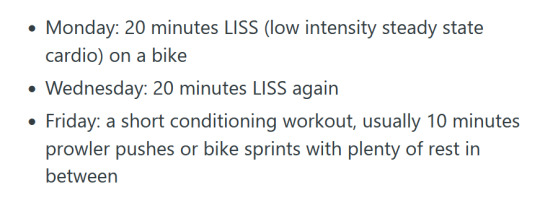
Something like this is IMO ideal if you don't have time or inclination to do much else. If it looks good to you, stop here! No need to read on. If you want more info and resources, go on
What's HIIT anyway?
sorry to be pedantic BUT I think it's important when exploring online fitness resources to know this: "light HIIT" is a misnomer. HIIT has become kind of a buzzword that's overused in fitness circles for marketing / SEO reasons, and I understand why (visibility!) but I wanted to clarify this just so you know what to look for going forward. HIIT = "High-intensity interval training": short bursts of exercise that have your heart literally jumping in your throat, followed by recovery. You're meant to give it your absolute all and flop dead like a fish on the grass when you're done. The upside is that HIIT workouts are very short; the downside is that they're very intense, and it can be kind of mentally daunting to psyche yourself up to do it.
So maybe I don't want to do the mentally daunting workout. What else is there?
NON-HIIT WORKOUTS THAT FUCK
Just because something is branded as "HIIT" when it's not, it doesn't mean it's not a damn good workout in its own right. Here is a youtube playlist from a "follow along workouts" fitness influencer who I LOVED during the pandemic (Caroline Girvan, I've yapped about her before). I used to do one of her cardio-heavy workouts once a week as an integration to an at-home fitness routine. That playlist I linked includes 92 (NINETY TWO) workouts. Some are bodyweight, some use dumbells for resistance; pick and choose.
LIGHT CARDIO
Maybe this is what you were looking for in the first place! LISS = Low-Intensity Steady Cardio. As the name implies, instead of "high-intensity bursts + recovery" style of workout, LISS workout means that you constantly keep moving at a steady rate. The downside is that LISS workouts are much longer, and maybe more dull, and you're better off doing them multiple times a week to see benefits. The upside is that they're less taxing on your body and require less recovery time, and they can be paired up with lifting days. Something like 15 mins on an exercise bike as a cooldown after lifting + one longer session (40+ min) on a day you don't lift would be what I think of as "integrating cardio into a lifting schedule" if you don't want to do anything high intensity. Replace exercise bike with walking up an incline or jogging or swimming or dancing or whatever. You can mix and match. You can take a brisk half hour walk 3 times a week and go on a hike every other weekend. Just find something that you enjoy and can stick to ( <- personally I have an audiobook I save to listen to ONLY when I'm doing chill-ish cardio to entertain me during)
Nevermind those alternatives. I want to do HIIT anyway. What do I do?
resources: introduction to HIIT writeup from r/HIIT (not famliar with the sub but the guide looks pretty solid) + some examples of HIIT workouts that you can do anywhere depending on your preferences (bodyweight training, exercise bike or rowing machine, kettlebell swings etc)
Here's an example of a follow-along HIIT workout from an influencer I think is very solid: ONE, TWO. They're 15 minutes long and pretty much what I mean when I say that HIIT is meant to be short and deadly; you do something like this, you recover, you're done.
BIG disclaimer: Don't start with any moves that are too fancy at first. Because HIIT = high intensity, that mostly translates into "doing some moves very fast to try and get your heart rate up within the interval window" and some people interpret that as trying to get in as many reps as possible. this goes extra hard for "follow along" workouts but also in general. If you're not very familiar with those moves, you can risk injury. Some HIIT routines are very dynamic, and if you don't have the movements nailed down, you're better off focusing on maintaining form rather than doing them really fast.
Other disclaimer: I would still pair up HIIT once a week with some more chill cardio on lifting days. If it's possible. But if you're doing HIIT in an intense way, that's already a lot!
TLDR
Summing up. Example of HIIT workouts. Follow alongs: one, two, three. I'd recommend doing one of these once a week if you like them, on a non-lifting day. If these aren't your speed, then a longer session of moderate cardio on a non-lifting day would be good, depending on what you have access to and enjoy. You can also do moderate cardio on lifting days if you're feeling extra motivated.
long-ass science-y article on benefits of cardio for weightlifters because I just really love this blogger
#Anonymous#ask#jockposting#sorry this is long and maybe confusing? I HOPE ITS CLEAR HMU IF NEEDED#fitblr
18 notes
·
View notes
Text
A (long) Rant About Fitness & Personal Health

So if you're new to my blog, hi, Im Lyra and I am a 27 y/o who is very passionate about fitness and physical health. A few years back I was 165lbs and very unhappy, so I decided to start working out and then boom, currently 116lbs and 18% body fat. (Im 5ft2)
I didnt do that through some wacko diet, restricting my food, keto, whatever. No. Simply put, I ate food, and lifted heavy shit over, and over and over. And whoda thunk?! I lost body fat, gained muscle, as well as mental clarity, improved my sleep health, and physical health as a whole. And another fun fact, I still ate "bad food". Oooo, scary. Pizza, beer, burgers, cake, cookies, if its food, I want to eat it, and I did (and do).
It irks me on a cellular level that some people try to convince others that the only and or best way to lose weight, is to follow some weird ass diet that likely has more health risks than benefits, and the people theyre trying to convince, are already pretty vulnerable and are ready to try pretty much anything to get results and FAST!
Whilst I more than understand wanting results asap, fitness and physical health is not something you will see results and progress with in a short span of time. Sure, you might start feeling a little better after a month of implementing a fitness routine, but you'll look the same, and more or less still be the same. Fitness above all else teaches patience, and discipline. The muscles, slimmer figure, or whatever your original goal was is just a bonus.
Let me break a few things down for you;
Food is fuel, so fuckin EAT
You dont need to be keto, or follow the carnivore diet, vegetarian, vegan, nada. Nothing. Zilch. Zero, to be able to lose weight and gain muscle effectively, efficiently, safely, and be able to maintain a healthy body.
The best thing that I have ever heard regarding food (and it helped change my own relationship with food) is a quote from personal trainer and fitness coach Alex Tima from Hybrid Wellness. Alex said "There is no such thing as bad/unhealthy food. There is only more nutritious food, and less nutritious food".
Too much of anything isnt good, and too little of anything is also not good. Thats why we call it a "balanced" diet.
A lot of fitness influencers and whoever now days are trying to convince their followers to follow a strict diet of only animal products and maybe some fruit, all while eating one meal a day because "thats what our ancestors did!". Yeah, and our ancestors died at the ripe old age of 30.
True, we are/were hunter gatherers, but evolution is a thing as well. Just because back then we could survive off of only one meal a day, doesnt mean we have too now. More so, the biggest and strongest of our ancestors, still ate more/the most!
Bottom line, eat food when youre hungry. Eat good food. Meats, fruits, veggies, grains, fats, etc.
Dont let anyone tell you that youre undisciplined because you dont subscribe to any particular diet.
2. If You Wanna Look "Toned", You've Gotta Put in the Work
After becoming more fit and healthy myself, I have had quite a few people approach me and ask how they can do the same. However, nine times out of ten, they all say the same thing, or at least some variation of "I just wanna look more toned".
Well guess what? You will not look more toned, if there is nothing to tone.
Cardio alone will not help you achieve your goals. Sure, walking is fantastic and jogging is a great way to increase cardiovascular health and stamina, but it will not make you look more "toned". For that, you will need to build muscle. And how do we build muscle?
WE LIFT HEAVY SHIT WE EAT LOTS OF PROTEIN AND THEN WE LIFT HEAVIER SHIT
Unless you are literally training like Sam Sulek, you will not look like Sam Sulek. Lifting weights will NOT make you look "big" or "bulky" if you're not trying to become big or bulky. Just lift a good amount to where its a bit of a struggle, and increase the weight gradually overtime as you become stronger.
That with a little bit of cardio works wonders. Not just cardio or weights by themselves.
Again...balance
3. FUCK THE SCALE
Sooooo many people are obsessed with the scale, being skinny, having the smallest BMI they could possibly get but let me tell you something.
My own mother has been obsessed with not only her weight (shes an almond mom with the exception of booze), but mine for as long as I can remember. Shes done so many diets, taken god knows what concoctions of...whatever, pills, etc all for the sake of being skiiinniiiiiiiii!!!!!
Guess where she is now? I mean sure, shes super fuckin skinny, but shes got diareah 24/7, liver damage, blood problems, thyroid issues, she had fuckin scurvey, and various brain issues and pretty much, delusions. But so long as her weight is low along with her waistline, she does not give a fuuuuuckk.
Guys, its not worth it. Do NOT stress over the numbers you see on the scale or any BMI calculator. Its okay if you want to drop a few pounds, but I highly HIGHLY encourage you to just simply take progress pics instead. Your eyes may lie to you, but the camera will not.
I could go on and on and on about this topic, but this is already a long enough post, and I don't want to info overload you lol.
To wrap up, fitness and personal health is all about balance. Nothing more, nothing less. Balanced diet, balanced sleep, balanced workout plan, etc.
If you have any questions whatsoever, please feel more than free to drop into my asks! Ill be more than happy to answer them when I can :)
#blog#that girl#becoming that girl#girl blogging#fitness#fitblr#gymlife#gymmotivation#gym aesthetic#ask me anything#rant post
9 notes
·
View notes
Text












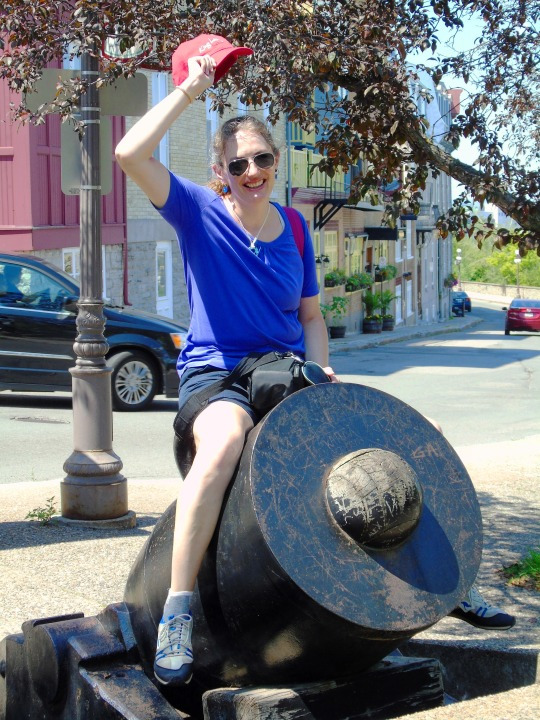




World Laughter Day
It boosts your mood, and even lengthens your life. Watch your favorite comedy, read a funny book, or gather some friends to tell jokes and get your diaphragm working.
Everybody knows that laughing feels good, but few realize how valuable these simple tools can be in improving our everyday wellness and wellbeing. Laughter cannot heal or solve anything, but it can help to heal and dissolve everything. That’s what World Laughter Day is for! It’s a day where people can relieve some stress and laugh. Discover a new happiness workout and learn about what happens during World Laughter Day!
History of World Laughter Day
World Laughter Day is an annual event celebrated worldwide to raise awareness about laughter and its many healing benefits, as well as about thousands of community groups around the world who regularly practice comedy that promote wellness and overall well-being. World Laughter Day is celebrated in most large cities around the world. Hundreds of people gather worldwide on that day to laugh together. It has been celebrated in Los Angeles since 2005 and has since spread all over the world as a way to express people’s love for comedy and laughter.
World Laughter Day is celebrated also by a congregation of laughter club members, their families and friends in their city like big squares, public parks or auditoriums. Laughter clubs usually have a variety entertainment program of music, dance and laughter contests. Winners are those with the most infectious, natural and effortless laughter. Laughter club members during this day participate in a peace march and carry banners and placards such as “World Peace Through Laughter, The Whole World Is An Extended Family, Join a Community Laughter Club – it’s free!” etc. During the march all chant “Ho Ho, Ha-Ha-Ha” and “very good, very good, yay!” clapping and dancing. This is known to be one of the best ways that laughter clubs help you have a good time and join a laughter club for special benefits.
Health benefits of laughter
Is there any better feeling than a deep-rooted belly laugh? Not only does it help us to connect with those we’re laughing with, but there are a number of health benefits that are associated with laughing as well. This includes the following…
Produces a general sense of well-being – One of the main benefits associated with laughter is that you’re generally going to feel better! If you laugh a lot, you’re going to be more of a positive person, and this can impact your life in so many different ways.
The release of endorphins is triggered – Endorphins are the natural painkillers within your body. They are released when you laugh. This can help you to feel good all over while easing chronic pain at the same time.
Boost T-cells – Laughter can also boost T-cells. These are specialized cells in your immune system, which are simply waiting to be activated. When you laugh, T-cells are brought to life, and they can help you to fight off sickness. So, next time you feel like you have a cold coming on, why not add some giggling and chuckling to your prevention strategy?
Improve cardiac health – Laughter is an exceptional cardio workout, particularly for anyone who is not able to do other types of physical activity because of illness or injury. It will get your heart pumping, enabling you to burn around a similar amount to the calories you would burn while walking at a slow to moderate pace.
Work your abs – One of the advantages associated with laughter is that it will tone your abs. The muscles in your tummy begin expanding and contracting when you’re laughing. This is similar to when you exercise your abs intentionally. At the same time, the muscles that are not in use when you are laughing will get the chance to relax. Is there any better way to get a toned stomach than having a good laugh?
Reduce stress hormone levels ��� Aside from this, a reduction in your level of stress hormones is another benefit! This helps to cut the stress and anxiety that impacts your body. Moreover, the reduction of stress hormones can cause a higher immune system performance.
Lowers blood pressure – Last but not least, laughing can lower your blood pressure. This can reduce your risk of a heart attack or a stroke.
How to Celebrate World Laughter Day
Want to have a good laugh? Go to a laughter club. Through them, you can preview new comedians and see what they have to offer in terms of comedic fun. If you want to be a comedian, learn from the best by joining comedy acts and taking part in improvisation classes. If you want, share some funny jokes on social media through the hashtag #WorldLaughterDay and have a good laugh with your friends by watching your favorite comedians on Netflix.
Here are some other ways that you can bring some more laughter to your life on World Laughter Day…
Start a Joke Jar – This is a good activity to get the whole family involved in. Simply grab a jar and get people to write a joke on a piece of paper and place it inside of the jar whenever they think of one. Next time you have a family dinner or someone needs cheering up, you can grab some jokes from the Joke Jar.
Learn to laugh at yourself – Take this day as an opportunity to teach yourself how to laugh at yourself properly. Most of us take ourselves too seriously! Learning to laugh at yourself enables you to be more vulnerable and more authentic – both are great traits to have.
Source
#New York City#Beringer Vineyards#Painted Desert#Petrified Forest National Park#Quebec CIty#Québec#USA#Sweden#Canada#travel#original photography#vacation#landscape#countryside#Ystad#Regina#RCMP Heritage Centre#Kings Point#iceberg#Sint Maarten#Philipsburg#Caribbean Sea#World Laughter Day#4 May 2025#WorldLaughterDay#first Sunday in May#Bonneville Salt Flats#San Francisco#Boston#tourist attraction
2 notes
·
View notes
Text
UPPER BODY AND ARM HIIT WORKOUT
Do you think spending hours at the gym daily was the only way to increase upper body strength and muscle? Think again. While strength training and progressive overload are important components of gaining strength and size, upper-body HIIT exercises are excellent for raising the load on your back, chest, shoulders, and arms without requiring a significant amount of time.
What Are The Benefits of Upper Body HIIT Workouts?
High-intensity interval training, or HIIT, is a training method that alternates between times of all-out exercise and periods of low-intensity exercise or rest, with a maximum workout duration of 30 minutes. While HIIT workouts do not normally generate as much muscle as weight training, they can still be beneficial, especially if you choose regimens that include various compound movements to keep the muscles engaged.
While HIIT workouts may be less effective in building muscle, they make up for it in other ways. When compared to weight training, HIIT workouts have a greater ability to improve muscle endurance, speed, and power, which can aid in sports performance and even weight lifting. HIIT also increases cardiovascular endurance and burns a large number of calories in a short period.
Are HIIT Workouts Enough For The Upper Body And Arms?
There are numerous advantages to incorporating upper body and arm HIIT workouts into your weekly workout, but depending on your aim, this may not be sufficient on its own. Upper body and arm HIIT workouts can suffice if you want to develop strength, power, and speed while also maintaining a leaner physique. If you can only devote 30-40 minutes to your workouts each day, HIIT workouts are ideal for getting a strong upper-body workout.
If you want to acquire significant upper body and arm bulk, you need also to incorporate weight training. Weightlifting challenges and fatigues the muscles to the point that they must be regenerated, and this process increases muscle size. Combining the two types of exercise is an effective strategy to increase general strength and fitness while also improving body composition. An upper-lower body training split could look like this:
Day 1: upper body workout – weightlifting
Day 2: lower body workout – weightlifting
Day 3: upper body workout – HIIT
Day 4: lower body workout - HIIT
Tips For Creating An Upper Body HIIT Workout:
We've given an upper body and arm HIIT routine to try below, but if you want to create your own workout, here are some pointers to get you started:
Choose complementing exercises. Choose a combination of complex workouts to build strength and cardio activities to improve speed and endurance. Choosing workouts that require the same pieces of gym equipment will make it easier to complete the exercises fast. Push-ups, clean and press, tricep dips, battle ropes, and renegade rows are some of the best upper body HIIT workouts you can do.
2. Begin with something small. Aim for 4-6 exercises with multiple circuits rather than 1-2 rounds of a variety of exercises. This will make it easy to follow, allowing you to focus all of your attention on the exercises and take advantage of the rest intervals rather than having to remember what to do next.
3. Try different times. There are numerous ways to structure your HIIT workout, so experiment with various intervals to determine what works best. For more strength-based exercises, longer intervals may be beneficial to get more reps in, whereas a more cardio-focused workout may benefit from shorter but higher intensity times of exercise and rest.
#Fitness#Health#gym#Workout#Exercise#FitnessGoals#GymLife#FitLife#Cardio#StrengthTraining#Yoga#Pilates#Running#FitFam#HealthyLiving#FitnessJourney#FitnessMotivation#Fitspo#Fitspiration#HealthyLifestyle#Sweat#TrainHard#NoPainNoGain#FitnessAddict#FitGirl#FitGuys#nutrition
9 notes
·
View notes
Text
"The Historical Fencing Channel is an organization that disparate historical fencing groups come together and, through agreement, to collectively validate and recognize the efforts of their individual members. In doing so a "common ground" and sense of community is created within, through which ideas, methods, and knowledge may be shared in order to promote the growth of both groups and their members beyond what would otherwise be separately achievable. This Channel is a common ground for members to submit videos of their interpretations, to create a library of techniques from differing groups"
More specifically we can see Adam Franti of the Lansing Longsword Guild in all the videos of this playlist - covering a lot of the basic strikes, guards and concepts of Meyer Dussack(effectively a form of medieval/renaissance central-european saber that usually had a (semi)complex hilt but was often practiced with leather and wooden practice weapons with simpler guards).
On that note here’s a masterpost of sorts of Meyer content on this blog
You may also remember Adam from the earlier methodology and murderhobos posts.
The provoker-taker-hitter tactical concept and its uses are quite relevant to dussack as a weapon.
You may also enjoy this general one-handed sword according to Meyer video as well
(and keep in mind the dussack is used by Meyer within his 1571 book as a basis for all one-handed weapons).
As well as these videos on how to apply the Meyer square to a dussack, and some other dussack-handling drills.
Lastly you might find the dussack tag of the blog relevant too.
For anyone who hasn’t yet seen the following links:
.
.
.
.
Some advice on how to start studying the sources generally can be found in these older posts
.
.
.
.
Remember to check out A Guide to Starting a Liberation Martial Arts Gym as it may help with your own club/gym/dojo/school culture and approach.Check out their curriculum too.
.
.
.
.
Fear is the Mind Killer: How to Build a Training Culture that Fosters Strength and Resilience by Kajetan Sadowski may be relevant as well.
.
.
.
.
“How We Learn to Move: A Revolution in the Way We Coach & Practice Sports Skills” by Rob Gray as well as this post that goes over the basics of his constraints lead, ecological approach.
.
.
.
.
Another useful book to check out is The Theory and Practice of Historical European Martial Arts (while about HEMA, a lot of it is applicable to other historical martial arts clubs dealing with research and recreation of old fighting systems).
.
.
.
.
Trauma informed coaching and why it matters
.
.
.
.
Look at the previous posts in relation to running and cardio to learn how that relates to historical fencing.
.
.
.
.
Why having a systematic approach to training can be beneficial
.
.
.
.
Why we may not want one attack 10 000 times, nor 10 000 attacks done once, but a third option.
.
.
.
.
How consent and opting in function and why it matters.
.
.
.
.
More on tactics in fencing
.
.
.
.
Types of fencers
.
.
.
.
Open vs closed skills
.
.
.
.
The three primary factors to safety within historical fencing
.
.
.
.
Worth checking out are this blogs tags on pedagogy and teaching for other related useful posts.
.
.
.
.
And if you train any weapon based form of historical fencing check out the ‘HEMA game archive’ where you can find a plethora of different drills, focused sparring and game options to use for effective, useful and fun training.
.
.
.
.
Check out the cool hemabookshelf facsimile project.
.
.
.
.
For more on how to use youtube content for learning historical fencing I suggest checking out these older posts on the concept of video study of sparring and tournament footage.
.
.
.
.
The provoker-taker-hitter tactical concept and its uses
.
.
.
.
.
Approaches to goals and methodology in historical fencing
.
.
.
.
.
A short article on why learning about other sports and activities can benefit folks in combat sports
.
.
.
.
.
Consider getting some patches of this sort or these cool rashguards to show support for good causes or a t-shirt like to send a good message while at training.
27 notes
·
View notes
Text
Buy Coolmax Compression Stockings and Athletic Socks In NL
When it comes to optimizing performance and comfort, athletes and everyday users alike turn to innovative apparel like Coolmax compression stockings. Whether you're battling pronation issues, preparing for a CrossFit challenge, or searching for the best socks for running, understanding the value of advanced sock technology is critical. This blog explores everything you need to know what is Coolmax, compression socks, and their benefits for an active lifestyle.

What Are Coolmax Compression Stockings?
Coolmax compression stockings are specially designed to combine the benefits of compression technology with the moisture-wicking capabilities of Coolmax fabric. They are ideal for improving circulation, reducing swelling, and keeping your feet dry during intense activities.
What is Coolmax?Coolmax is a high-performance polyester fabric engineered to wick moisture away from the skin. This technology keeps your feet cool, dry, and comfortable, even during the most strenuous workouts.
The Benefits of Compression Running Socks
Compression running socks are not just for athletes—they're beneficial for anyone who wants to enhance blood flow and reduce fatigue. Here's why they’re essential:
Enhanced Circulation: These socks use graduated compression to promote blood flow, helping reduce muscle soreness and speeding up recovery.
Moisture Control: Incorporating Coolmax technology ensures your feet stay dry during long runs or workouts.
Injury Prevention: Compression socks provide added support to prevent issues like shin splints and cramps.
How Coolmax Socks Help with Pronation Control
Pronation refers to the natural inward roll of the foot while walking or running. Excessive pronation can lead to discomfort, fatigue, or injuries. Coolmax compression socks for walking all day are designed to stabilize your feet and reduce the risks associated with overpronation. With arch support and targeted compression zones, they improve alignment and overall performance.
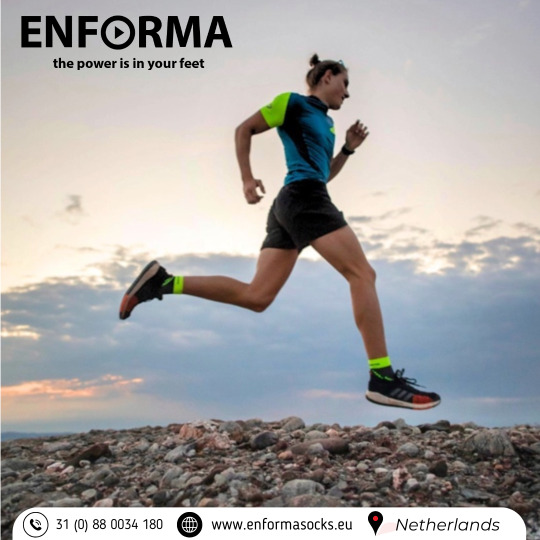
CrossFit Socks: A Must-Have for High-Intensity Workouts
CrossFit is one of the most demanding fitness regimens, requiring gear that can keep up with its intensity. CrossFit socks made with Coolmax fabric are a perfect choice for the following reasons:
Durability: Built to withstand tough conditions and frequent movements.
Comfort: Prevents blisters and keeps feet dry even during prolonged workouts.
Compression Benefits: Supports muscles and reduces fatigue during heavy lifting and cardio intervals.
Key Features to Look for in Compression Socks
When selecting Coolmax compression stockings or athletic socks, look for the following features:
Material: Ensure the socks are made with Coolmax fabric for optimal moisture-wicking and comfort.
Fit: A snug fit ensures better compression and prevents the socks from slipping.
Cushioning: Extra cushioning can add comfort during high-impact activities like running or CrossFit.
FAQs
1. What is the purpose of compression running socks?
Compression running socks enhance blood flow, reduce muscle fatigue, and speed up recovery after workouts.
2. How does Coolmax fabric work?
Coolmax fabric wicks moisture away from your skin, keeping your feet dry and cool during physical activity.
3. Can Coolmax socks help with overpronation?
Yes, Coolmax compression socks are designed with targeted support to stabilize your feet and reduce excessive pronation.
4. Are CrossFit socks different from regular socks?
Absolutely. CrossFit socks are made to withstand the high-intensity and durability demands of CrossFit workouts, often incorporating features like moisture control and arch support.
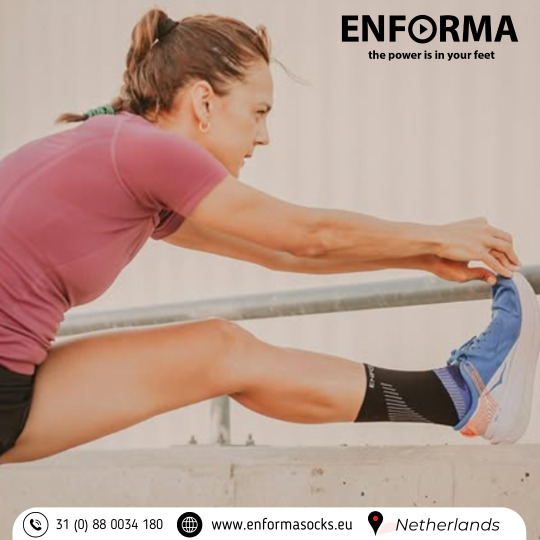
Conclusion
Choosing the right socks is an investment in your performance and comfort. Whether you’re addressing pronation issues, preparing for a CrossFit session, or hitting the trails with compression running socks, products made with Coolmax fabric deliver unmatched benefits. Their ability to wick moisture, provide targeted compression, and support foot health makes them a must-have for athletes and casual users alike.
3 notes
·
View notes
Text
Long Time No See...
Happy new year ! New year's is my favorite holiday if I'm honest. Christmas and Thanksgiving tend to be overblown and very materialistic in my family and so I've never been particularly fond of them. But New Years is all about goal-setting and looking ahead to the future, and making plans, while also appreciating the good things from the year prior.
In 2024, I did a lot (although at times it didn't feel like it). I went abroad for 3 weeks to the UK and Ireland. I went to Italy with my husband for his best friend's wedding. I turned 30 and started my astrophysics/ocean tattoo sleeve. I was interviewed for an article in my local news about the Rubin Observatory and what I hope to use its data for. I applied for 11 post-doc positions and fellowships; I've already had an interview that went really well for one in Copenhagen, I have a good shot of getting an offer from Edinburgh, I have been shortlisted for MIT in Boston, and I have a strong application for a fellowship at UW in Seattle. I think that there is a good shot I will at least have some options available to me.(:
Some of my Resolutions are fitness-based, but a lot of them are for general well-being. I really want to try to knit a sweater this year. I want to wrap up my professional website (which I started last winter break and haven't gotten back to since, lol). I want to make a list of things I should do and see on the Island before we leave Victoria in the Fall. I'd like to get back to getting up early in the morning to have an hour or two to myself, and get back into journaling at night.
Besides these, I have some general fitness/diet-type goals for January. For one, I wasn't drinking much at all while applying for jobs, but after Thanksgiving I stopped being mindful about it, and I definitely drank more than I should have during Christmas break. So I am doing dry January. It's good enough timing too, because I do have weight-loss related goals and need to remind myself how good it feels to see the scale decrease. I haven't used a scale in a long time because it wasn't really important to my goals, but before we move in the Fall I wan't to feel healthier and better in my clothes. The second part of this January goal is that I have decided to kick-start the weight loss with a month of keto dieting, which I have done before and had good results with. The hardest part about keto is not eating fruit, but I am also trying to be cost-effective and eat veggies that are in-season now anyways, so it's not the worst to put it on the back burner for a bit. The last part of this January goal is 30 days of yoga, which is a good activity that I can do while still being very low-carb. You do not want to push your body when in keto.
Once I get through 4 weeks of yoga, no drinking, and a keto diet, I'll transition slowly to higher carbs and try to add back in weightlifting (possibly running 1x a week so I can maintain my cardio, but I will take it easy at first to adjust). The point of this combined method is to hopefully lose ~12 lbs in a relatively short time to motivate myself (this happened last time and I was about the same weight), and then I can focus on doing basically a cutting diet to lean down and maintain muscle. Especially after a month of keto, I think it will be possible to keep my meals high in protein and lower in carbs, which I usually struggle with because I do drink alcohol weekly, and often to excess. But I think this period of isolation with job apps has really helped me reframe where I want to put my energy these days.
It's the 4th now which means I've been doing keto for 4 days, and I've had decent success so far. A big benefit of keto for me is that I am not usually craving anything and I don't really eat unless I'm hungry. Also there weirdly seems to be a part of low-carb that enhances my focus ? I am not sure what that is. (Food sleepies due to carbs I understand, but I don't understand additional focus...)
Anyways, I will post some meals if they look delicious enough in the coming weeks. My SW for 2024 is 190 lbs and I am currently at 187 (water weight). We will see how this changes by next week.
#keto#keto diet#meal planning#phd#grad student#grad school#getting healthy#health and fitness#new years resolution#yoga
2 notes
·
View notes
Note
You've mentioned working out before, I'd love to hear more about your workout routine!
I am always looking at new routines/excerises to keep me motivated and from being stagnant. Also, if you have any tips for eating well to help aide in the working out process and getting results. Like I said, I'm always looking for new avenues to go down and try
Hi! 🧡 Seems like you are deeply committed to staying healthy and that is a beautiful, powerful thing.
I switch up my work out routine based on my mood and status during the day. Usually, I’ll do a 5-10 minute warm up routine and then I’ll just go for the treadmill (can be easily replaced with a brisk walk or run). After that I will do one of my routine workouts which incorporate exercises from Steve Zim (used to sign up to his program so I picked up his routine), Christine Bullock (she has some amazing free work outs online and her MindValley one is also amazing for people who don’t have a lot of time to exercise) and many more. Finally, I do 10-30 minutes wind down where I stretch and incorporate yoga here and there. Since I easily get bored, I always switch up my routine meaning one day I’ll focus on body weight exercises, the next cardio and so on.
Here’s an example:
Day 1:
Cardio
Day 2:
Bodyweight training
Day 3:
HIIT
Day 4:
Core Training
Day 5:
Foundation Training (mostly Pilates but it varies)
I try to push the limit each workout to ensure steady progress.
The biggest advice I could give is pick your music carefully right down to its energy, lyrics and rhythm. Remember that what you feed your mind affects your body so choose songs that energize you and support your wellbeing. Be as intentional about your music as you are about your moves.
Also, some days you will be tired or sad or won’t feel like it, so you have two choices: do it anyway but adjust. Meaning maybe you wanna spend an hour stretching and meditating instead of a full blown work out or have another physical activity that can provide you with relief. Go with your flow, respect your body. Or you might even end up skipping a day or two, remember your body also needs to rest. Those days off are an investment in your wellbeing and while it may appear as if you are doing nothing your body is benefitting. I find that the more I respect my body and move the better my body feels from posture to energy, the way we move or don’t affects it all. Your confidence will soar if you stay disciplined while also respecting your body.
As for eating, conscious eating is key. You can have a bit of everything if you do it with care. Minimise distractions while you are eating and chew consciously paying attention to each flavour. Choose healthy alternatives whenever you can and also have moments where you indulge. It goes back to listening to your body to avoid overeating. Emotional eating can also come into play at times so inner work is also important. 🧡
I know it sounds weird but making healthy choices and working out all stem from Mindset so working on your self belief, value and love must come first if you want to be someone who easily makes those healthy choices and works out pleasantly. Basically, you have to shift your identity to your desired outcome and persevere until you reach that outcome. There will be challenging days and that’s perfect, it means you are steadily making progress.
I am sure you already know all of this and so much more so feel free to share your perspective on things, you never know who it will help. Thank you for the beautiful question and energy! 🧡
3 notes
·
View notes
Text
Black Ox: A Natural Boost for My Performance and Wellbeing
For the past few months, I've been using Black Ox, an all-natural testosterone booster supplement, and I've been thoroughly impressed with the results. As a man in my late thirties, I started noticing a natural decline in energy levels and muscle mass. While I wasn't looking for a miracle cure, I was interested in finding a safe and effective way to support my overall health and fitness.
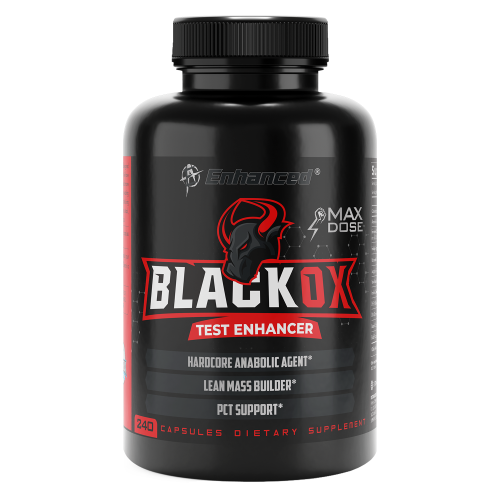
Revitalised Energy Levels
Before starting Black Ox, I often felt sluggish throughout the day, especially after work. Hitting the gym after a long day felt like a chore, and my workouts lacked their usual intensity. Black Ox has made a significant difference. Within a couple of weeks, I noticed a noticeable improvement in my energy levels. I felt more awake and focused throughout the day, and that renewed energy translated into my workouts. I started pushing myself harder in the gym, leading to better results and a more fulfilling workout experience.
Enhanced Strength and Stamina
The increased energy translated directly into improved strength and stamina. I could lift heavier weights for more reps, and my overall endurance during cardio sessions went up significantly. This newfound strength and stamina not only benefited my gym performance but also carried over into my daily activities. Simple tasks like carrying groceries or climbing stairs felt easier.
Natural and Safe Ingredients
One of the things that initially drew me to Black Ox was its focus on natural ingredients. The supplement contains a blend of herbs and extracts with a long history of use in promoting men's health, including ashwagandha, tongkat ali, and fenugreek. I appreciate that the ingredients are clearly listed on the label, allowing me to research them and feel confident about what I'm putting into my body.
Improved Overall Wellbeing
Beyond the physical benefits, I've also noticed a positive impact on my overall well-being. Black Ox seems to have helped manage stress levels, leading to a more positive and focused mindset. Additionally, I've experienced better sleep quality, which further contributes to feeling refreshed and energized.
Not a Magic Bullet
It's important to note that Black Ox isn't a magic bullet. I've seen the best results when I combine it with a healthy diet, regular exercise, and adequate sleep. However, Black Ox has definitely been a valuable addition to my routine, helping me achieve my fitness goals and feel my best overall.
Would I Recommend Black Ox?
Absolutely! If you're a man looking for a safe and natural way to support your testosterone levels, improve energy levels, and enhance your overall health and fitness, I highly recommend giving Black Ox a try. Just remember, for optimal results, it's important to maintain a healthy lifestyle alongside the supplement.
5 notes
·
View notes
Text
goal setting for projectors:
instead of setting goals for physical, external things and burning yourself out or beating yourself up because you gave up before the finish line, try to set goals for ways of being. we've all come across something interesting that has improved the way we live, whether its for efficiency, health, understanding, or literally anything that makes life more enjoyable for us. i say, work on those things that will make your personal life better. i am a splenic projector, and recently i have found success in improving my bodily health. this has been in the works for several years (im also heavily saturn ruled and saturn rules the channel connecting to my throat center!). it started with a simple intention -i want to be healthier. but there was a lot of trying with no sticking to it. the main issue was that i could not find the right type of excercise. projectors are really iffy with excercise - we cant do it too often or too much or we get tired, and splenic projectors can get sick. i also did not have any generator to excercise with! and wow, trying to consistently exercise by yourself as a projector feels like seppuku. i have my heart and root centers defined so i could do any routine i had for about a month or so but after that i just completely lost interest and ended up feeling bad about it. like damn why cant i do that? well. thats just not how i work and thats okay. at that time i had a lot of other stuff going on, stuff that was more important than gainz, like going through the motions of being a high schooler who lives in her aunts crumbling basement. and yes i was trying to excercise in this crumbling basement - me, with taste cognition, crazy. so it wasnt the right time. but now it is. now i do have the energy to focus on directly improving myself and my life. it all started when i graduated. i immediately had a weight lifted off of my chest and i could function properly. well rested and able to focus on whatever came my way. i am a 1/3 profile as well, which means that the way i reach these goals is by first doing research (1 line), and then using my authority to choose what to take into my life and go through that trial and error process with (3 line). so from the beginning, i knew that the three things i wanted to work on, the three things that i knew were the most important, were sleep, food, and excercise. so here comes the research. and sometimes its unintentional. i didnt google search "poisons in food". but the state of food in the us led me to wonder what exactly these ingredients are doing, what effect are they having on my body? also saw stuff on twitter that triggered me to do research. i just get twinges to look further sometimes. and i saw a documentary last year about the effects of sugar and its substitutes. over time the knowledge builds up. i became pescatarian. i know what the nutritional content of almost every food i eat is. i found a partner to go to the gym with, just about once a week (i have wet kitchens environment as well). im still finding a good way for me to do reps and sets, cardio and strength, without me being absolutely obliterated by the end, but i am pretty close to finding that sweet spot. and rest has been so, so important to me over these last few months. ive been putting my foot down and saying NO if im tired, if i know something will wear me out. and my bed... after a long time of sleeping on a futon i now sleep on a beautiful cloud that begs me to stay. this is an indicator of success to me, as a projector. i didnt have a tangible thing that told me ive completed my goal. and its still not over - there is much, much more to life. but now i am able to take on the responsibilities and benefits that come with being this type of person and knowing this type of knowledge. master what you know is good for you. what benefits you, will benefit anyone who seeks your guidance. youre the one who is teaching people right from wrong here. youre the one giving them the map youve drawn from the lessons youve learned.
#philosophy#metaphysical#human design#astrology#divinity#humanity#aquarius#for projectors#projector#taste cognition#need motivation#splenic authority#saturn#health#capricorn#virgo#6th house#12th house#throat center#root center#ego center#heart center#energy projector#exercise#wet kitchen#gym#success#sleep#sleeping beauty#resting
3 notes
·
View notes
Text
TABATA WORKOUT ( Part 1 )
Tabata training, a sort of HIIT activity, is said to be one of the most effective ways to burn fat while improving overall health and fitness in as little as 4 minutes! With more and more members, particularly Tabata newcomers, asking questions about the Tabata workout and what it entails, we wanted to address some of the most common inquiries.
What Is The Tabata Workout?
Tabata is a type of High-Intensity Interval Training (HIIT) that involves very short, precise periods. All HIIT exercise consists of periods of high-intensity training followed by periods of moderate-intensity or rest, though the times can vary. Each Tabata exercise includes the following:
20 seconds of extremely intense, all-out movement
10 seconds of rest
Repeat 8 times for a total of 4 minutes
Typically, a workout may mix numerous rounds to create a lengthier workout (about 20 minutes) that targets multiple muscle groups and works the cardiovascular system while remaining easy to fit into a busy schedule. A four-minute round could include the same exercise or a variety of activities, such as:
20 seconds of sprinting + 10 seconds rest
20 seconds of push ups + 10 seconds rest
20 seconds of mountain climbers + 10 seconds rest
20 seconds of squat jacks + 10 seconds rest
What Are The Benefits Of A Tabata Workout?
Tabata training provides numerous health and lifestyle benefits. These include (but are not necessarily limited to):
Boosted anaerobic capacity: Anaerobic exercise enhances your body's tolerance to lactic acid, allowing you to work out more efficiently before reaching the lactate threshold. This means you can perform at a higher intensity for longer periods.
Improved aerobic endurance: Aerobic endurance refers to your body's ability to use oxygen to fuel physical exertion. The more efficient you are, the easier it is to exercise, allowing you to push harder and for longer periods.
Fat burning: Tabata and other HIIT workouts push your body to its limits, increasing your heart rate and burning a lot of energy, making them ideal for burning calories (and thus fat). As an anaerobic exercise, it depletes the body's oxygen supplies, and restoring them burns calories long after the session.
Convenience: Tabata workouts may easily fit into even the busiest schedule. There is no need for equipment or a large amount of space; you could even conduct a Tabata workout while waiting for the kettle to boil!
Where Did Tabata Come From?
Tabata originated in Japan and was named after Dr. Izumi Tabata, a professor at Ritsumeikan University. He was employed by the Japanese speed skating team in the 1990s to evaluate the success of their training regimen, which consisted of brief maximal bursts of sprints followed by short rest periods. Dr. Tabata conducted thorough scientific investigations and was able to demonstrate the remarkable benefits of this training approach.
Are Tabata Workouts Effective?
Tabata workouts may sound too wonderful to be true, but they are scientifically proven. Dr. Tabata's study contrasted two groups on a six-week fitness program: one group completed an hour of moderate-intensity exercise on a stationary cycle five times a week (1800 minutes of training), and the other group did high-intensity Tabata-style training four times a week (120 minutes).
While both groups improved their aerobic capacity, the Tabarta group performed significantly better, with a 15% increase in VO2 max (which indicates cardiovascular health and maximal aerobic power) and a 28% increase in anaerobic fitness compared to no improvements in the moderate exercise group. Steady-state, moderate-intensity cardio has benefits and should not be overlooked, but this demonstrates how beneficial short Tabata sessions are!
#Fitness#Health#gym#Workout#Exercise#FitnessGoals#GymLife#FitLife#Cardio#StrengthTraining#Yoga#Pilates#Running#FitFam#HealthyLiving#FitnessJourney#FitnessMotivation#Fitspo#Fitspiration#HealthyLifestyle#Sweat#TrainHard#NoPainNoGain#FitnessAddict#FitGirl#FitGuys#nutrition
3 notes
·
View notes
Text
"I have worked on this article on and off over the past half year or so. I started it right after my club’s tournament Revolution Rumble, because I was fascinated by the variance of skill in the tier of almost all unrated fencers, and also how that shook out in terms of HEMA rating. This led to a bit of a deep dive into how HEMA ratings works, what it’s good for, and what it isn’t. Because of that, I have decided to make this the first of a three part series about HEMA ratings. The second part will be about why HEMA ratings is not the best system for a world ranking, and the third part will be about how the pandemic affected the ratings. I’m sure I will talk more about HEMA ratings beyond this, but that’s all I have in the immediate future.
HEMA Ratings Series:
Part 1: Tiered Tournaments and Unrated Fencers
Part 2: World Ranking
Part 3: Covid Recovery"
An interesting piece on how to approach tiered tournaments and why. Not relevant to every historical fencing practitioner, but a useful read for any tournament organizer looking to consider the various relevant factors.
For anyone who hasn’t yet seen the following links:
.
.
.
.
Some advice on how to start studying the sources generally can be found in these older posts
.
.
.
.
Remember to check out A Guide to Starting a Liberation Martial Arts Gym as it may help with your own club/gym/dojo/school culture and approach.Check out their curriculum too.
.
.
.
.
Fear is the Mind Killer: How to Build a Training Culture that Fosters Strength and Resilience by Kajetan Sadowski may be relevant as well.
.
.
.
.
“How We Learn to Move: A Revolution in the Way We Coach & Practice Sports Skills” by Rob Gray as well as this post that goes over the basics of his constraints lead, ecological approach.
.
.
.
.
Another useful book to check out is The Theory and Practice of Historical European Martial Arts (while about HEMA, a lot of it is applicable to other historical martial arts clubs dealing with research and recreation of old fighting systems).
.
.
.
.
Trauma informed coaching and why it matters
.
.
.
.
Look at the previous posts in relation to running and cardio to learn how that relates to historical fencing.
.
.
.
.
Why having a systematic approach to training can be beneficial
.
.
.
.
Why we may not want one attack 10 000 times, nor 10 000 attacks done once, but a third option.
.
.
.
.
How consent and opting in function and why it matters.
.
.
.
.
More on tactics in fencing
.
.
.
.
Types of fencers
.
.
.
.
Open vs closed skills
.
.
.
.
The three primary factors to safety within historical fencing
.
.
.
.
Worth checking out are this blogs tags on pedagogy and teaching for other related useful posts.
.
.
.
.
And if you train any weapon based form of historical fencing check out the ‘HEMA game archive’ where you can find a plethora of different drills, focused sparring and game options to use for effective, useful and fun training.
.
.
.
.
Check out the cool hemabookshelf facsimile project.
.
.
.
.
For more on how to use youtube content for learning historical fencing I suggest checking out these older posts on the concept of video study of sparring and tournament footage.
.
.
.
.
The provoker-taker-hitter tactical concept and its uses
.
.
.
.
.
Approaches to goals and methodology in historical fencing
.
.
.
.
.
A short article on why learning about other sports and activities can benefit folks in combat sports
.
.
.
.
.
Consider getting some patches of this sort or these cool rashguards to show support for good causes or a t-shirt like to send a good message while at training
13 notes
·
View notes
Text
Why Reformer Pilates is the Ultimate Full-Body Workout
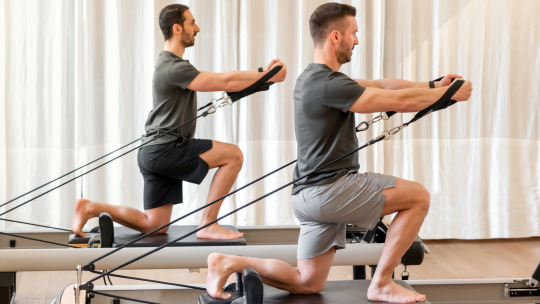
Reformer Pilates is more than just a fitness trend—it's a transformative exercise method that is changing how people approach full-body workouts. Originating from the traditional Pilates method, Reformer Pilates uses a specialized machine called a reformer to offer a dynamic, resistance-based workout that targets every muscle group. As more people discover its unique benefits, Reformer Pilates is gaining popularity for its ability to tone muscles, increase flexibility, and improve overall body strength, all while being low-impact and accessible to many fitness levels.
In this article, we will explore why Reformer Pilates is considered the ultimate full-body workout, diving into its unique components, benefits, and how it stacks up against other forms of exercise.
Key Takeaways
Reformer Pilates engages the entire body, providing a comprehensive workout that targets all major muscle groups.
It offers a balanced approach to fitness by improving strength, flexibility, and cardiovascular health.
The low-impact nature of Reformer Pilates makes it suitable for individuals of all fitness levels, including those with injuries.
Compared to other forms of exercise, Reformer Pilates offers unique benefits that can complement traditional workouts like weight training or mat-based Pilates.
What Makes Reformer Pilates Unique?
The Reformer Machine: A Brief Overview
At the heart of Reformer Pilates is the reformer machine. This piece of equipment may look intimidating at first, but it is designed to support and enhance your movements for maximum benefit.
Components of the Reformer: The reformer consists of a sliding carriage, adjustable springs for resistance, footbars, and straps or ropes to hold onto while performing exercises.
How the Reformer Machine Works: The sliding carriage moves back and forth as you push against the footbar or pull on the straps, using your own body weight along with the spring resistance to create a challenging workout that targets various muscle groups.
Full-Body Engagement
Reformer Pilates is known for its ability to engage the entire body simultaneously.
Muscles Targeted in Reformer Pilates: From the core muscles to the arms, legs, back, and even smaller stabilizing muscles, Reformer Pilates ensures that no part of the body is left out.
Benefits of Simultaneous Muscle Activation: Working multiple muscle groups at once improves coordination, balance, and functional strength, which translates into better performance in daily activities and other sports.
Benefits of Reformer Pilates as a Full-Body Workout
Improves Core Strength and Stability
One of the primary benefits of Reformer Pilates is its focus on core strength.
Why Core Strength is Crucial: A strong core is essential for overall body stability, posture, and balance. It also reduces the risk of injury.
How Reformer Pilates Strengthens the Core: Almost every exercise performed on the reformer machine involves engaging the core muscles. Whether you are doing leg presses, pulling on the straps, or balancing on the moving carriage, your core is constantly activated.
Enhances Flexibility and Posture
Flexibility and good posture are key components of a healthy, well-functioning body.
The Role of Stretching in Reformer Pilates: The reformer allows for a wide range of motion, which helps in stretching muscles that are often tight due to prolonged sitting or poor posture.
Realignment and Postural Benefits: Reformer Pilates exercises are designed to correct muscular imbalances, promoting better posture and alignment. This can help alleviate back pain and prevent future injuries.
Boosts Cardiovascular Fitness
While Pilates is often associated with strength and flexibility, Reformer Pilates also offers cardiovascular benefits.
Cardio Elements in Reformer Pilates: Many reformer exercises incorporate quick, repetitive movements that elevate your heart rate, providing a cardiovascular workout.
Integrating Reformer Pilates into Your Cardio Routine: Adding Reformer Pilates to your regular fitness routine can help boost endurance and overall cardiovascular health.
Supports Injury Rehabilitation and Prevention
Reformer Pilates is particularly beneficial for those recovering from injuries or looking to prevent them.
Low-Impact Exercise Benefits: The controlled, low-impact movements make Reformer Pilates ideal for people with joint issues or those recovering from injuries.
Rehabilitation Protocols with Reformer Pilates: Physical therapists often recommend Reformer Pilates as part of rehabilitation because it strengthens muscles without putting excessive strain on joints.
How Reformer Pilates Compares to Other Workouts
Reformer Pilates vs. Traditional Pilates
While both forms of Pilates offer excellent benefits, there are some key differences.
Equipment and Technique Differences: Traditional Pilates is typically done on a mat, while Reformer Pilates uses the reformer machine, allowing for greater resistance and support.
Unique Benefits of Each: Reformer Pilates provides a more dynamic and versatile workout due to the machine's adjustable resistance and ability to accommodate a wider range of exercises.
Reformer Pilates vs. Weight Training
Reformer Pilates also has distinct advantages over weight training.
Strength Building vs. Muscle Toning: While weight training focuses on building muscle mass through heavy lifting, Reformer Pilates emphasizes muscle toning and elongation, creating a leaner appearance.
Flexibility and Mobility Comparison: Reformer Pilates incorporates stretching into every movement, enhancing flexibility and range of motion, whereas weight training may lead to muscle tightness if not complemented with sufficient stretching.
Conclusion
Reformer Pilates is a powerful and versatile workout that caters to a broad spectrum of fitness goals, whether you are looking to tone muscles, increase flexibility, or improve overall strength. With its focus on core stability, full-body engagement, and low-impact movements, Reformer Pilates offers a holistic approach to fitness that few other exercises can match. Whether you're a beginner or an experienced fitness enthusiast, incorporating Reformer Pilates into your routine can help you achieve a balanced, stronger, and more flexible body.
FAQs
Is Reformer Pilates Suitable for Beginners?
Yes, Reformer Pilates is suitable for beginners. The adjustable resistance levels and guided movements make it accessible to all fitness levels.
How Often Should I Do Reformer Pilates to See Results?
For best results, aim to practice Reformer Pilates 2-3 times a week. Consistency is key to experiencing noticeable changes in strength, flexibility, and overall fitness.
What Should I Wear to a Reformer Pilates Class?
Wear comfortable, form-fitting clothing that allows for easy movement. Avoid loose clothing that may get caught in the reformer machine. Grip socks are also recommended for safety and stability.
Can Reformer Pilates Help with Weight Loss?
While Reformer Pilates primarily focuses on strength, flexibility, and muscle toning, it can aid in weight loss by increasing muscle mass, boosting metabolism, and providing a low-impact cardiovascular workout.
Are There Any Risks Involved in Reformer Pilates? Reformer Pilates is generally safe for most people, but it's essential to practice under the guidance of a certified instructor, especially if you have pre-existing conditions or are recovering from an injury.
1 note
·
View note
Text
Fuel Your Day with Two Wheels: Why Daily Cycling Should Be Your New Habit
The morning alarm screams, and your motivation hits the snooze button faster than a Tour de France champion. Sound familiar? We all crave healthy habits, but finding something enjoyable and sustainable can be a tricky climb.
But what if the answer was waiting right outside your door, whispering sweet nothings with two wheels and a breeze in its spokes?
Yes, friends, I'm talking about daily cycling. It's not just a nostalgic childhood memory; it's a powerful exercise routine that fuels your body, mind, and even the planet. Still not convinced? Let's crank up the gears and explore why you should consider making cycling your daily companion.
Health Benefits That Leave You Breathless (In a Good Way!)
Cycling isn't just about scenic rides and wind-tousled hair (although those are pretty awesome perks). It's a cardio king, strengthening your heart and lungs with every pedal stroke. This translates to lower blood pressure, reduced risk of diabetes, and even a stronger immune system. Feeling sluggish? A daily cycle invigorates your body, leaving you feeling energized and ready to conquer your day.
More Than Just a Physical Fix: Your Mental Wellness Gets a Tune-Up
Think cycling is just about leg power? Think again! Studies show that pedaling your way to work or enjoying a leisurely afternoon ride can significantly reduce stress and anxiety. The rhythmic motion and fresh air act as natural mood boosters, leaving you feeling calmer and more focused. Say goodbye to that post-work slump and hello to a clear, balanced mind.
Saving the Planet, One Pedal Stroke at a Time
Let's face it, our planet needs heroes, and cyclists are some of the coolest ones around. Ditching the car for your trusty two-wheeler reduces your carbon footprint and air pollution, making a real difference in the fight against climate change. Bonus points if you use your bike for errands or commuting – you'll be surprised how much you can accomplish on two wheels!
Accessibility: The Beauty of Cycling Lies in Its Simplicity
Unlike some forms of exercise, cycling doesn't discriminate. Whether you're a seasoned athlete or a weekend warrior, there's a bike and a pace out there for you. Start with short, leisurely rides and gradually increase distance or intensity as you build your fitness. Plus, it's easy on your joints, making it a perfect option for people of all ages and abilities.
Ready to Get Rolling?
So, are you ready to trade four wheels for two and experience the transformative power of daily cycling? It's an investment in your health, happiness, and the planet. Remember, small steps lead to big changes, so start with a ride around the block and see where the journey takes you. You might just surprise yourself with how much you enjoy the view (and the endorphin rush!).
Join the Movement!
Share your cycling journey in the comments below! What motivates you to ride? What are your favorite routes or tips for beginners? Let's build a community of cycling enthusiasts and inspire each other to keep pedaling towards a healthier, happier planet.
Remember, the road to a healthier you starts with a single pedal stroke. So, what are you waiting for? Get out there and ride!
#cycling#bikelife#dailycycling#healthylifestyle#exercise#fitness#wellness#cardio#mentalhealth#ecofriendly#sustainable#environment#planet#commute#transportation#motivation#inspiration#community#ride
4 notes
·
View notes